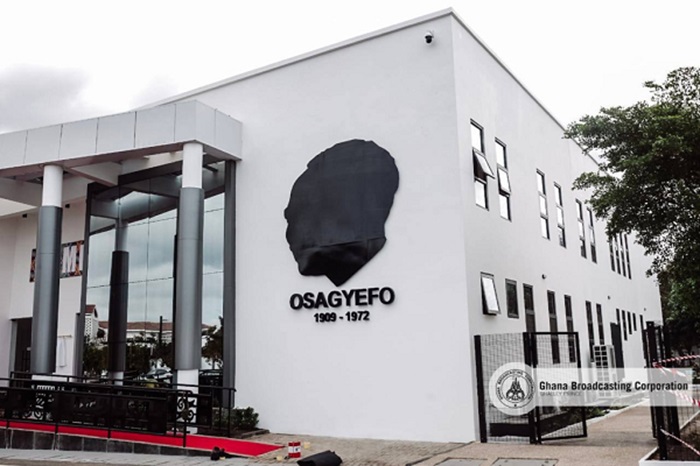The Kwame Nkrumah Memorial and Mausoleum Park (KNMMP) has recorded a surge in patronage, welcoming about 200,000 visitors every month since its reopening in July 2023.
This remarkable achievement follows an extensive rehabilitation project funded by the World Bank in collaboration with the government.
Edward Quao, acting Director of the park, highlighted the progress during a visit to the site by a delegation from the World Bank, led by its President for Western and Central Africa – Ousmane Diagana.
According to Mr. Quao, the park’s transformation has significantly boosted its appeal to both domestic and international tourists.
“Before 2019, the park received less than 30,000 visitors annually. However, during the Year of Return campaign in 2019, that number surged to 98,000 visitors. The impact of the recent rehabilitation project has been phenomenal. Since July 2023, we’ve been recording nearly 200,000 visitors every single month,” Mr. Quao revealed.
Additionally, he said a new reception facility has been added, enhancing visitor experience and further cementing the park’s position as a must-see attraction.
“What excites us most is the rise in domestic tourism. While international tourists continue to play a significant role, the growth in local visitors has been tremendous; and domestic tourism is now competing strongly with international tourism at the park,” Mr. Quao also said.
The park, originally built in 1991 and inaugurated in 1992, had not seen major renovations for almost two decades.
Mr. Diagana commended the efforts to preserve and celebrate the nation’s history, emphasising the World Bank’s commitment to supporting projects that align with cultural preservation and economic development.
“The revitalisation of the park has turned it into a key driver of the country’s tourism sector. The surge in visitor numbers demonstrates the success of the government and World Bank’s efforts in preserving cultural heritage while boosting economic growth through tourism,” he elaborated.
The visit highlighted the impact of the World Bank’s initiatives in the country and provided an opportunity to explore Ghana’s history and Dr. Kwame Nkrumah’s key role in its independence.
As part of the visit, Mr. Diagana signed the high-level visitors’ guest book in the VVIP waiting room, marking his visit with a symbolic gesture of acknowledgment and respect for the country’s heritage.
He also toured the iconic site, engaging with key officials to gain insights into the park’s significance and its contribution to tourism and national pride.
Savannah Region records tourism boom in 2024
In a related development, Samuel SAM reports that the Savannah Region recorded a surge in tourism in 2024, boosting economic activities and creating jobs.
The rehabilitation of Mole National Park facilities, the Larabanga Mosque, the Mystery Stone, the Salaga Slave Market and its wells, coupled with the region’s peace and serene environment, have made these sites more attractive to tourists and investors.
According to data from the Savannah Regional Office of the Ghana Tourism Authority (GTA), the region welcomed 23,900 tourists in 2024, an increase of 5,740 from the 18,160 recorded in 2023.
The statistics further revealed notable improvements in visitor numbers at key sites. For instance, the Mognori Eco-Village recorded 530 tourists in 2024, comprising 200 locals and 330 foreigners, compared to 650 visitors in 2023, including 250 locals and 400 foreigners.
The Larabanga Mosque recorded 610 visitors in 2024, up from 480 in 2023, with the number of local tourists increasing from 230 to 300 and foreign visitors rising from 250 to 310.
The GTA’s analysis also showed that since 2020, the region has experienced a steady increase in both tourists and investors, boosting domestic tourism and preserving cultural heritage.
The recently inaugurated Salaga Tourism Sites and the improved road network have enhanced accessibility to key attractions, including the Mole Park, Larabanga Mosque and the Mystery Stone. Roads leading to these attractions have been tarred, making them more motorable and appealing to visitors.
Park officials attribute the growing interest to strict protection of forest reserves, awareness campaigns and the provision of alternative livelihoods for residents near the park. These efforts have reduced wildlife poaching, providing tourists with exciting experiences of seeing protected animals.
Former Minister of Tourism, Arts and Culture, Andrew Egyapa Mercer, noted: “The rehabilitation of the Salaga Slave Market and Heritage Site is more than a remembrance of the past; it acknowledges the role slavery played in shaping our world today”.
Residents have expressed gratitude to the management of Mole Park and the GTA for their efforts in preserving and protecting the region’s tourist sites. These efforts have significantly boosted local businesses, including artisans, transport operators and the hospitality sector.
Savannah Regional Marketing Officer for GTA, Kennis Ateere, highlighted the authority’s collaboration with traditional authorities, government agencies and private organisations to enhance domestic tourism and cultural heritage.
“The 2024 emancipation commissioning of the Salaga Market and Heritage Site has significantly boosted tourism in Salaga. Similarly, Damongo has benefitted from increased tourism to the park, Mystery Stone and Larabanga Mosque, promoting Ghana’s rich heritage, history and pan-Africanism,” he said.
He added that the accommodation sector has been the primary beneficiary, with most visitors staying for more than a day. Efforts are underway to build the capacity of smock weavers and other artisans to produce quality products that will further promote the sector.
Mr. Ateere called on investors to collaborate with the GTA to build on existing sites and identify new potential attractions to create more job opportunities and reduce unemployment in the region.
Source: thebftonline

